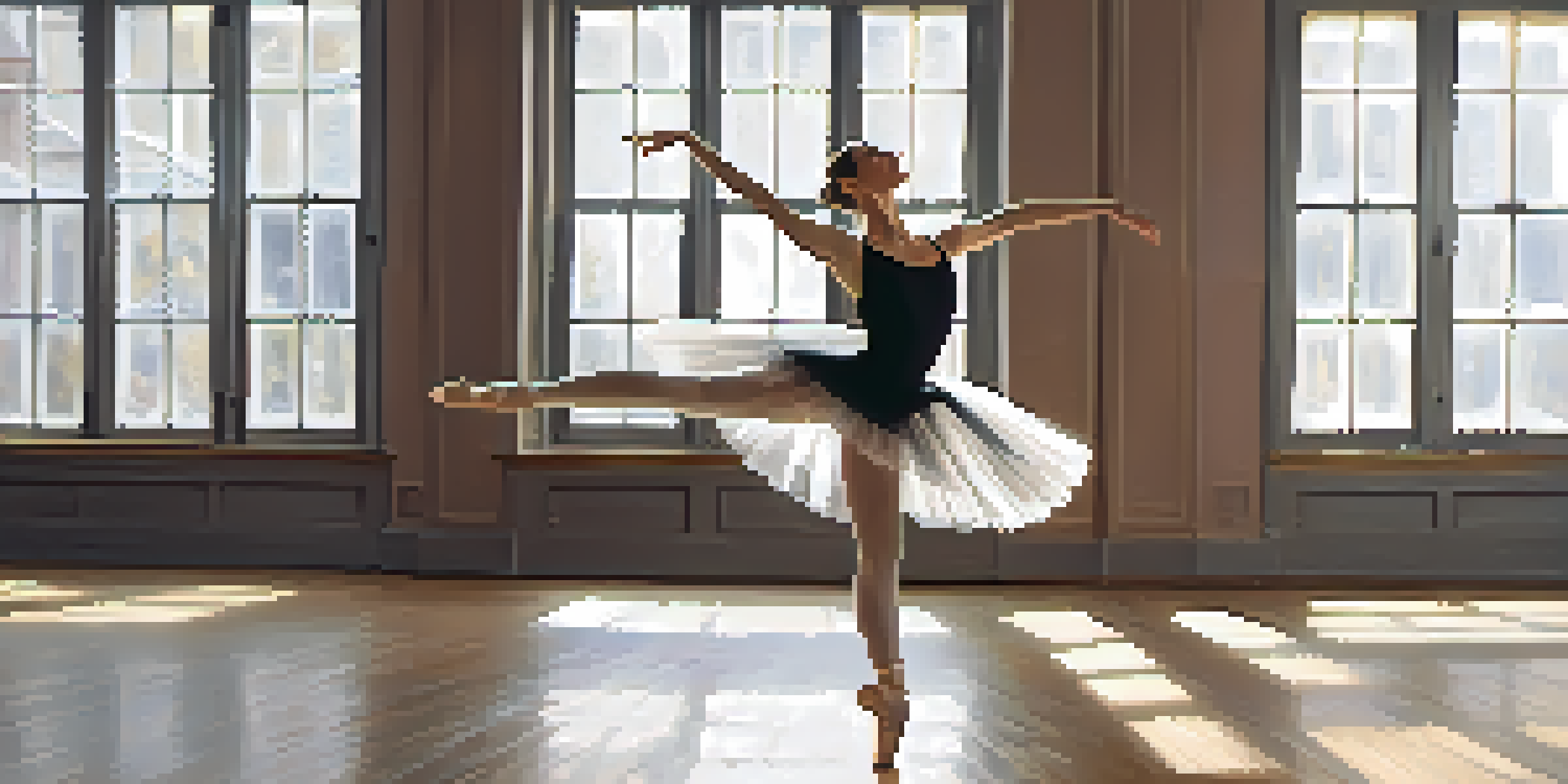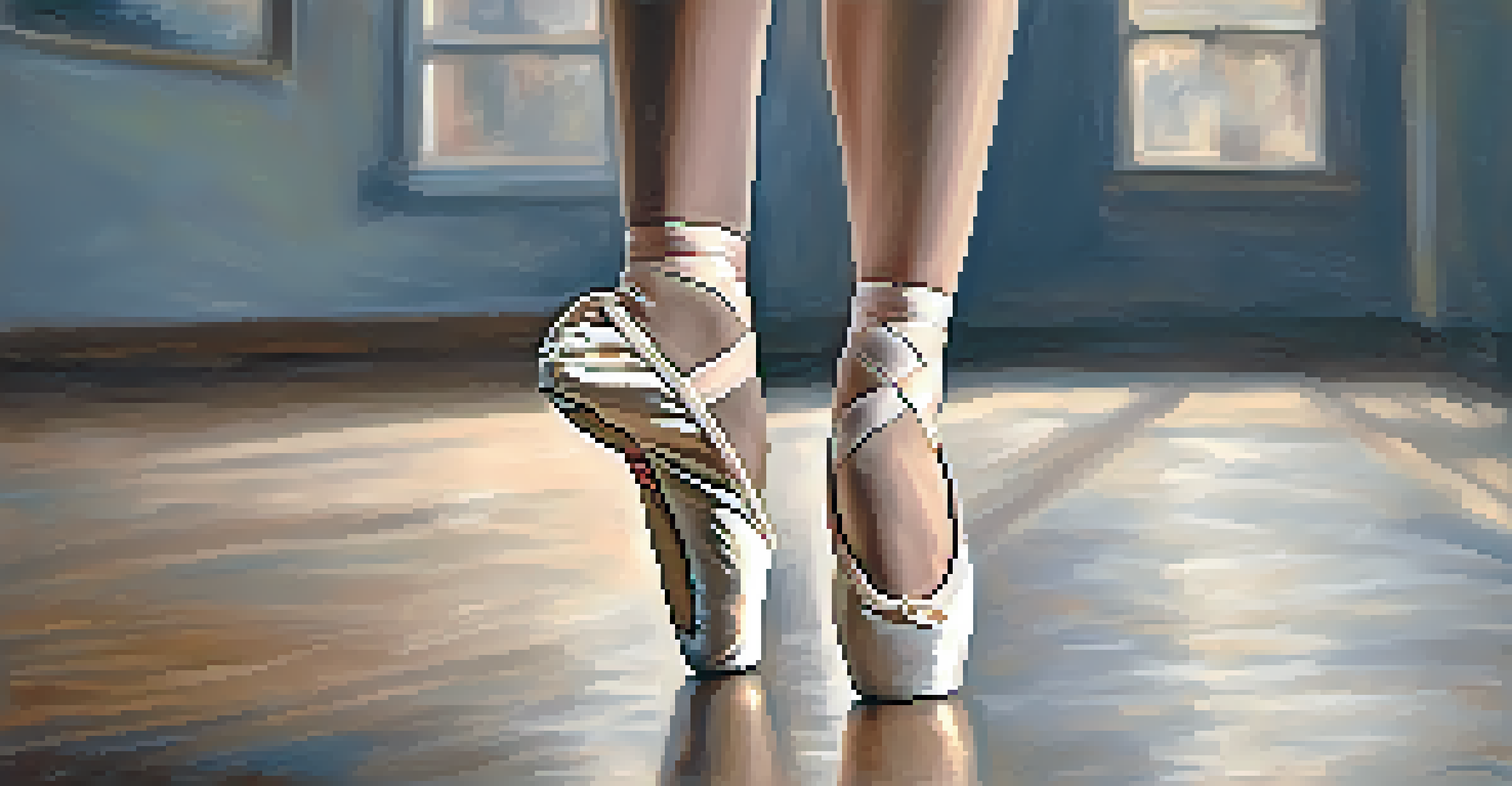Developing Core Strength for Ballet: Essential Exercises

Understanding Core Strength in Ballet Performance
Core strength is crucial for ballet dancers as it provides stability, balance, and control. It encompasses not just the abdominal muscles but also the back, hips, and pelvis. This strength allows dancers to execute movements with grace and precision, making it foundational for every ballet technique.
The core is the root of all movement. If the core is weak, the body will not be able to perform movements effectively.
When a dancer has a strong core, they can maintain proper alignment, which is vital for preventing injuries. For instance, a strong core helps in balancing during pirouettes and maintaining form during pliés. Without this strength, dancers may struggle with these movements, leading to fatigue and potential injury.
Moreover, core strength contributes to the overall aesthetics of ballet. A well-developed core allows for fluid movements and enhances the visual appeal of performances. Thus, focusing on strengthening the core not only boosts performance but also elevates a dancer's artistic expression.
The Role of Pilates in Core Strength Development
Pilates is an excellent method for developing core strength, and many ballet dancers incorporate it into their training. This exercise system focuses on controlled movements that target the core muscles, helping improve flexibility and stability. The principles of Pilates align beautifully with the demands of ballet, making it a popular choice among dancers.

One of the key benefits of Pilates is its emphasis on breath control and alignment, which are essential in both Pilates and ballet. For example, the 'Hundred' exercise not only strengthens the core but also teaches dancers how to engage their muscles effectively while maintaining proper posture. This alignment is critical in executing ballet movements smoothly.
Core Strength is Essential for Ballet
A strong core provides stability, balance, and control, which are crucial for executing ballet movements with grace.
Additionally, Pilates can help dancers recover from injuries by promoting muscle balance and coordination. This is particularly beneficial for ballet dancers who may be prone to injuries due to the physical demands of their art. Incorporating Pilates into a training routine can lead to long-term improvements in core strength and overall dance performance.
Essential Core Exercises for Ballet Dancers
Several key exercises can significantly enhance core strength for ballet dancers. Planks, for instance, are a fantastic way to engage the entire core while also improving stability. By holding a plank position, dancers can build endurance, which is essential for longer performances.
Strength and flexibility are not mutually exclusive. They are essential partners in the art of dance.
Another effective exercise is the 'Russian Twist,' which helps strengthen the oblique muscles. This rotation is crucial for many ballet movements, such as turns and jumps, where controlled twisting is required. Practicing this exercise can lead to greater control and precision in those movements.
Lastly, incorporating 'Bridges' into a routine can strengthen the glutes and lower back, which support the core. By lifting the hips while keeping the shoulders and feet grounded, dancers can create a solid foundation for their ballet technique. These exercises, when practiced consistently, can lead to marked improvements in core strength.
The Importance of Flexibility Alongside Core Strength
While core strength is essential, flexibility plays an equally vital role in ballet performance. A strong core without flexibility can lead to stiffness, hindering a dancer's ability to achieve the full range of motion required for various ballet techniques. Therefore, it's crucial to balance strength training with flexibility exercises.
Incorporating stretches like the 'Seated Forward Fold' can enhance flexibility in the hamstrings and lower back. This stretch not only complements core strengthening exercises but also helps dancers maintain the fluidity needed for graceful movements. Dancers should aim to incorporate flexibility exercises into their routine regularly.
Pilates Boosts Core Development
Incorporating Pilates into training enhances core strength through controlled movements and breath control, benefiting ballet performance.
Moreover, increased flexibility can enhance the effectiveness of core exercises. When the body is flexible, the core can engage more fully during movements, leading to improved performance overall. Thus, a well-rounded approach that includes both core strength and flexibility will yield the best results for aspiring ballet dancers.
How to Create a Core Strength Training Routine
Creating a core strength training routine involves selecting exercises that target different areas of the core. It's beneficial to include a mix of static and dynamic exercises to ensure all muscle groups are engaged. A well-structured routine might combine planks, Russian twists, and bridges for maximum effectiveness.
Dancers should aim to practice core exercises at least three times a week, gradually increasing the intensity and duration as they build strength. For example, starting with 30 seconds of planks and gradually working up to a minute can be an effective way to enhance endurance. Consistency is key in seeing progress.
Additionally, incorporating core exercises into regular ballet practice can help reinforce strength while performing dance movements. By integrating these exercises into their warm-up or cool-down routines, dancers can make core training a seamless part of their overall practice. This holistic approach ensures that core strength becomes second nature on stage.
Listening to Your Body: Avoiding Overtraining
As dancers work on building core strength, it's essential to listen to their bodies to avoid overtraining. While pushing limits is part of improvement, understanding personal boundaries prevents injuries. Signs of overtraining can include fatigue, persistent soreness, and decreased performance, all of which indicate the need for rest.
Incorporating rest and recovery days into a training schedule is vital. This allows the muscles to repair and grow stronger, ultimately enhancing performance. For instance, alternating intense core workouts with restorative yoga or gentle stretching can provide balance and prevent burnout.
Balance Core Strength with Flexibility
Achieving a balance between core strength and flexibility is key to maximizing a dancer's range of motion and overall performance.
Furthermore, maintaining open communication with instructors or coaches can help dancers identify when they might need to modify their routines. By fostering a supportive environment, dancers can ensure they are training wisely, focusing on sustainable growth in their core strength without compromising their overall well-being.
Tracking Progress: Measuring Core Strength Improvement
Tracking progress is an important aspect of developing core strength. Dancers can keep a journal to record their performance in core exercises, noting improvements in duration, repetitions, or overall ease of movement. This not only provides motivation but also highlights areas that may need more focus.
In addition to journaling, dancers can utilize video recordings to analyze their form and technique over time. Observing oneself can provide insights into how core strength impacts ballet performance, helping to identify any adjustments needed for improvement. This visual feedback can be incredibly valuable.

Lastly, setting specific, measurable goals can help dancers stay on track. Whether it's holding a plank for an additional 15 seconds or achieving a new level of flexibility, having clear targets fosters a sense of accomplishment. Celebrating these achievements, no matter how small, can keep motivation high and reinforce the importance of core strength in ballet.